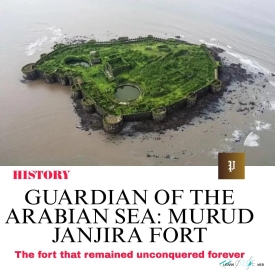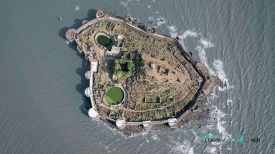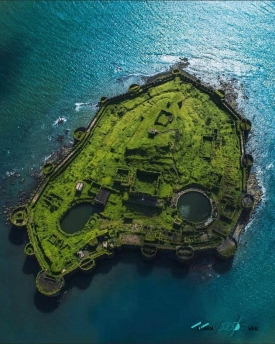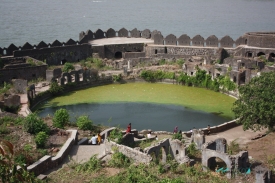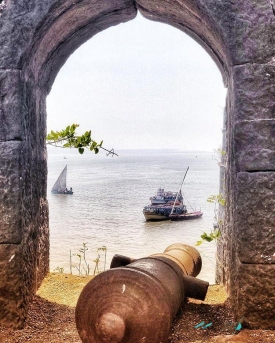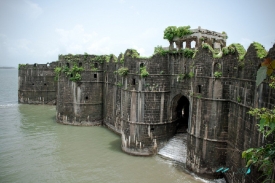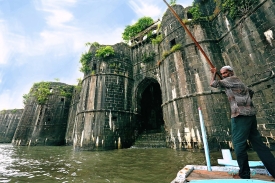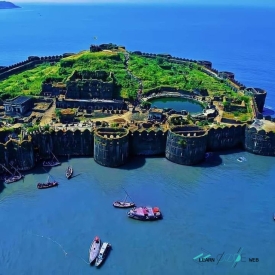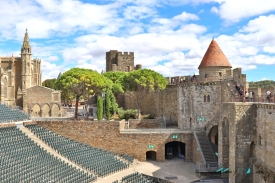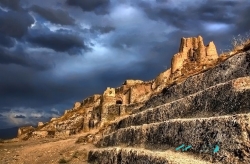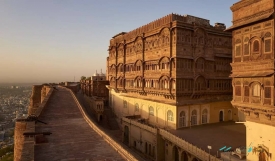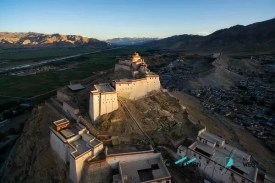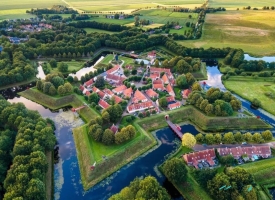ABOUT Murud-Janjira Fort
Murud-Janjira Fort, perched on an oval-shaped rock off the Arabian Sea coast, is a testament to India’s maritime heritage and architectural brilliance. Known for its impregnable defenses, the fort has stood the test of time, resisting invasions from some of history’s greatest powers.
Positioned near the coastal village of Rajapuri in Maharashtra, the fort’s strategic location made it a pivotal naval defense point. Over centuries, it resisted numerous attacks from regional powers, including the Marathas, the Portuguese, and the British. Even the legendary Maratha king Chhatrapati Shivaji Maharaj could not breach its defenses.
The fort once housed 572 cannons, with notable examples like "Kalal Bangdi," "Landa Kasam," and "Chavri," known for their size and range, serving as deterrents against naval attacks.
Murud-Janjira Fort’s architecture reflects a blend of Indian and Mughal styles:
Massive Bastions: The fort features 19 rounded bastions, equipped with cannons like the famed "Kalal Bangdi," known for its immense size and range.
Hidden Entrances: The main gate faces east and remains concealed until close approach, while a secret western gate provided discreet sea access.
Sustainability: Inside, two freshwater ponds ensured a sustainable water supply despite the fort’s oceanic surroundings.
Symbolic Sculptures: A striking tiger sculpture near the main entrance depicts the fort’s invincible spirit.
The fort’s history reflects a blend of cultures. The Siddis, an African-descended community, left their mark on the architecture and cultural practices of the region. This heritage is still celebrated in local traditions and art.
How to Reach: Accessible by sailboats from Rajapuri jetty, the journey to the fort offers scenic views of the Arabian Sea.
Hours: Open daily from 7:00 AM to 6:00 PM.
Tips for Visitors: Comfortable footwear is recommended for exploring the fort’s uneven terrain. Hiring a local guide enhances the experience with historical insights.
Preservation of Murud-Janjira Fort is crucial to maintaining its historical and cultural significance. The Maharashtra Tourism Development Corporation (MTDC) has undertaken measures to conserve the structure and promote sustainable tourism.
Murud-Janjira Fort stands as a symbol of resilience, history, and architectural ingenuity. Visiting this iconic site offers not just a glimpse into India’s glorious past but also an unforgettable experience amidst the Arabian Sea’s serene beauty.
India’s Unyielding Sea Fortress
Murud-Janjira Fort’s history dates back to the late 15th century, when a wooden structure known as "Medhekot" was built by local fishermen. Later fortified by Burhan Khan and expanded under the rule of the Siddis, the fort became an iconic stronghold that remained unconquered throughout its history.Positioned near the coastal village of Rajapuri in Maharashtra, the fort’s strategic location made it a pivotal naval defense point. Over centuries, it resisted numerous attacks from regional powers, including the Marathas, the Portuguese, and the British. Even the legendary Maratha king Chhatrapati Shivaji Maharaj could not breach its defenses.
The fort once housed 572 cannons, with notable examples like "Kalal Bangdi," "Landa Kasam," and "Chavri," known for their size and range, serving as deterrents against naval attacks.
Cultural Significance
The fort reflects a confluence of cultures, particularly the African heritage of the Siddi rulers, who were originally from Abyssinia (modern-day Ethiopia) Their integration into Indian society and contributions to the region's history are evident in the fort's architecture and cultural landscape.Murud-Janjira Fort’s architecture reflects a blend of Indian and Mughal styles:
Massive Bastions: The fort features 19 rounded bastions, equipped with cannons like the famed "Kalal Bangdi," known for its immense size and range.
Hidden Entrances: The main gate faces east and remains concealed until close approach, while a secret western gate provided discreet sea access.
Sustainability: Inside, two freshwater ponds ensured a sustainable water supply despite the fort’s oceanic surroundings.
Symbolic Sculptures: A striking tiger sculpture near the main entrance depicts the fort’s invincible spirit.
The fort’s history reflects a blend of cultures. The Siddis, an African-descended community, left their mark on the architecture and cultural practices of the region. This heritage is still celebrated in local traditions and art.
How to Reach: Accessible by sailboats from Rajapuri jetty, the journey to the fort offers scenic views of the Arabian Sea.
Hours: Open daily from 7:00 AM to 6:00 PM.
Tips for Visitors: Comfortable footwear is recommended for exploring the fort’s uneven terrain. Hiring a local guide enhances the experience with historical insights.
Preservation of Murud-Janjira Fort is crucial to maintaining its historical and cultural significance. The Maharashtra Tourism Development Corporation (MTDC) has undertaken measures to conserve the structure and promote sustainable tourism.
Murud-Janjira Fort stands as a symbol of resilience, history, and architectural ingenuity. Visiting this iconic site offers not just a glimpse into India’s glorious past but also an unforgettable experience amidst the Arabian Sea’s serene beauty.
The Best Pictures of Murud-Janjira Fort
Videos of Murud-Janjira Fort







